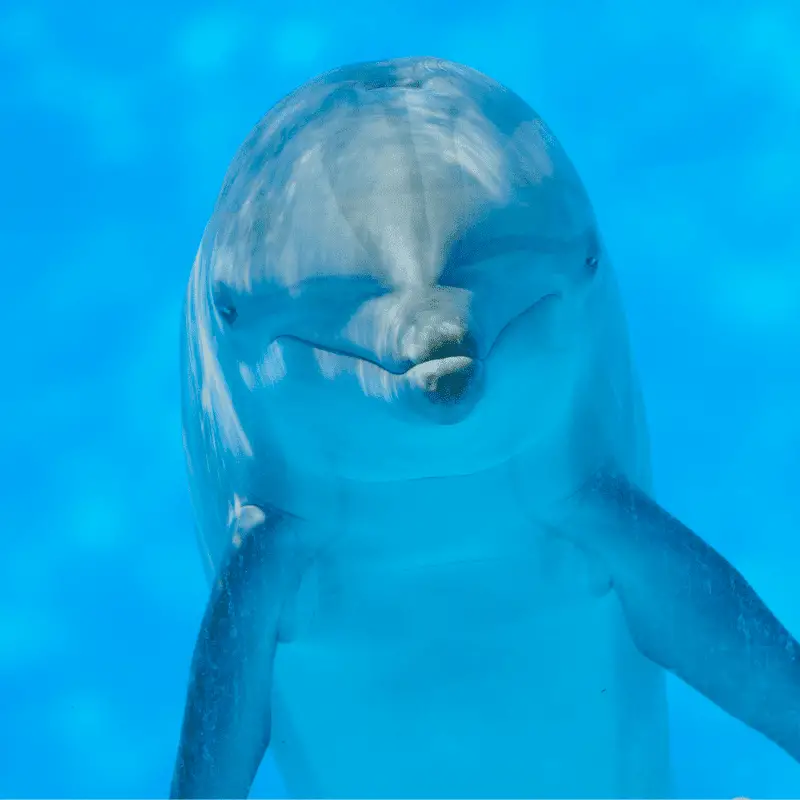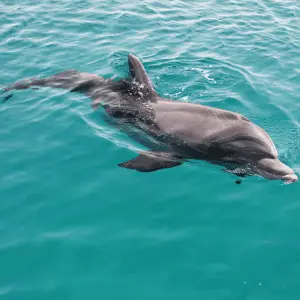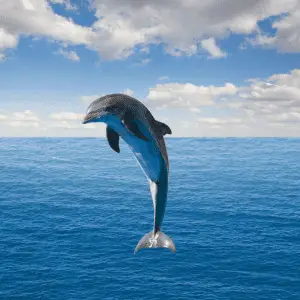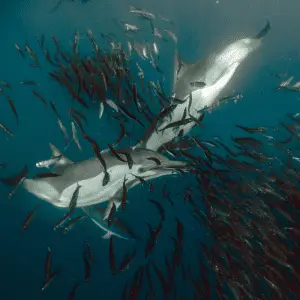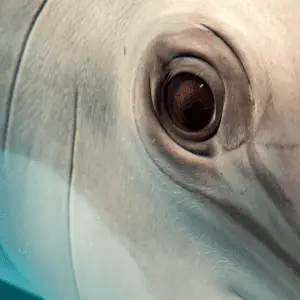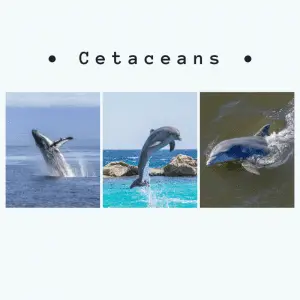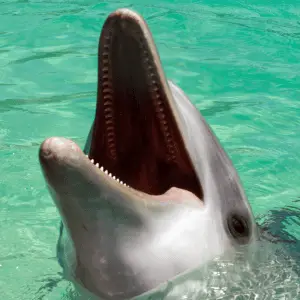Dolphins have two stomachs, split into three different gastric compartments within. These three stomach chambers all have different digestive processes from each other and are connected using tiny tubes.
Why do dolphins have three compartments?
Dolphins have three compartments in their stomach because they don’t chew their food. The unique shape of a dolphin’s teeth doesn’t allow them to break up their food into pieces, so they need a stomach with three different compartments to digest it.
First Compartment
The first part of the stomach is used as food storage and the part to start the grinding process.
Second Compartment
In the second compartment, digestion happens. This part of a dolphin’s stomach makes many juices to break down food.
Third Compartment
The 3rd compartment is the part of a dolphin’s stomach where they absorb nutrients. After that, they push the excretory element down to their anal tract.
Recommended Read: Do Dolphins Pee?
Are Dolphins Polygastric Animals?
Yes, dolphins are polygastric animals, which means they have more than one stomach. Dolphins have more than one stomach because they dont chew their food and need an extra compartment just for the grinding process.
Even though dolphins come with two stomachs, some people still think of it as a single stomach with multiple chambers. The reason is all the sections of a dolphin’s stomach are created from a single primitive gastric tube. However, they are divided into two main stomachs and three compartments for different digestive tasks.
Getting To Know The Chambers
The first chamber of the dolphin’s stomach stores the food that dolphins generally swallow whole. This stomach is mainly used for grinding up and compressing the whole food into smaller pieces.
Dolphins’ stomach is also where the absorption of food begins. The second stomach is considered the main stomach. Here the dolphins release a lot of gastric fluid that starts the digestion process. The third is the pyloric stomach, which helps absorb nutrients and food particles.
Even though it may seem unnatural, the dolphins’ digestive system is created to suit the aquatic environment perfectly. This unique stomach structure helps the dolphins to get all the required nutrients from their food efficiently.
As the first chamber of the stomach is for storing food, it is the largest of all three compartments. This chamber acts as the primary receiving centre of all food items. When necessary, this portion of the stomach stretches quite easily.
The second chamber of the dolphin stomach is known as the glandular chamber. Its primary responsibility is to separate the digestive enzymes that help break down the food.
The 3rd Compartment, the pyloric stomach, is the passage that absorbs the nutrients and helps the digested food into the small intestine.
The Role Of The Liver In The Digestion Of Food
The liver plays a significant role in processing the nutrients from food and absorbing them. The liver generates bile, which is then sent to the small intestine for digestion and absorption of food’s fat-soluble vitamins and fat contents.
The nutrients absorbed in the small intestine go to the liver first. Then dolphins can send these nutrients to the rest of the body or be processed for storage.
The dolphin liver also helps to perform several functions in the body. For example, the liver of dolphins plays a significant role in blood clotting.
Do dolphins have two brains?
No dolphins have only one brain, but that large brain is divided into two hemispheres, like humans. The unique aspect of the brain of dolphins is that each of these hemispheres can rest at different points in time.
While one hemisphere of the brain gets, the rest of the other hemisphere stays awake, making sure that the dolphin does not drown and does not get attacked by the predators as well.
The corpus callosum plays the main communication bridge between the two hemispheres of dolphins’ brains. Dolphins showcase this unique unihemispheric sleep pattern as their primary sleeping method. However, both hemispheres of the dolphin brain can get some rest simultaneously. Although brief, it’s not their chosen sleep method, as it makes them more vulnerable to predators.
Why do the dolphins never chew their food?
A dolphin’s jaw structure and teeth do not allow the dolphin to chew their food. Instead, they swallow it whole, which is why they have more than one stomach—an extra one for grinding up and compressing food into smaller pieces.
Advantages Of The Teeth And Jaw
The reason is that dolphins cannot chew their food. Their teeth positioning and jaw make it impossible for the dolphins to chew on their prey. Instead, their teeth are structured perfectly to get a grip on their prey.
This unique tooth structure is probably a result of evolution. While hunting, it is impossible for the dolphins to spend time chewing on their prey. If they do that, the fish will swim away from them. So, the best hunting strategy for dolphins is to grab their prey tightly and gulp it down.
The first chamber is the storage and grinder to complete the chewing process. Skipping the chewing process at the start will ensure that the fish does not escape. That is one of the reasons why they have developed the three-chambered stomach.
What Do Dolphins Eat?
The dolphins’ diet depends on their environment and the time of the year. However, most dolphins eat various fish, sea plants and crustacean animals.
For example, bottlenose dolphins living near the Scotland region love to eat salmon fish during the spring and summer months. However, salmon is scarce during the winter, so they tend to shift their preference and hunt down fish like herring and mackerel.
The bottlenose dolphins that live on other sides of the world will eat fish, like mullet, mackerel, catfish, and many tropical fishes. On the other hand, the amazon river dolphins are known to feed on more than 40 different fish species. These dolphins also love to hunt freshwater crustaceans.
Recommended Read: How Many Dolphin Species Are There?
The orcas, the most prominent member of the dolphin family, generally hunt much larger prey. Like sea lions, they live on seabirds and other marine mammals. The orcas’ diet mostly depends on the available food and the hunting techniques they learned from their elders.

